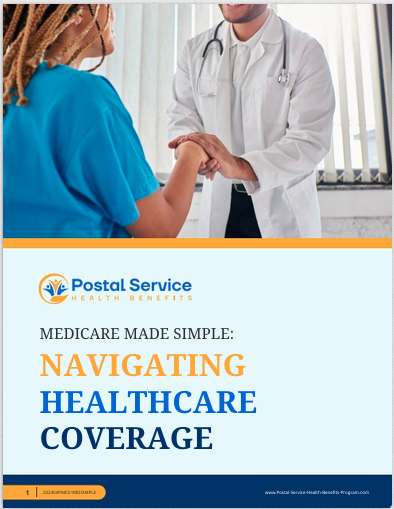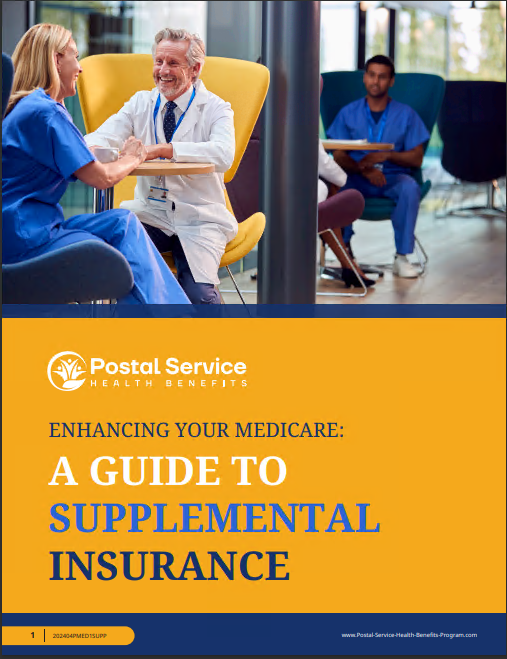Key Takeaways
-
Many enrollees in the 2025 Postal Service Health Benefits (PSHB) Program are surprised by how much they pay out of pocket due to coinsurance—even after paying premiums.
-
Understanding how coinsurance works alongside deductibles, copayments, and out-of-pocket maximums is critical to making informed choices during Open Season or after qualifying life events.
Why Coinsurance Still Catches You Off Guard
You may think that once you pay your monthly premium, your health plan should handle most of the bills. But coinsurance quietly shifts more cost responsibility to you, especially for major services. Coinsurance is not a flat fee—it’s a percentage of the service cost, and that percentage can escalate quickly.
Unlike a copayment, which is a fixed amount (like $30 for a doctor visit), coinsurance varies based on the total cost of the service. If your PSHB plan states a 20% coinsurance for a procedure that costs $2,000, you owe $400—on top of any deductible that may still apply. Multiply this by several visits or treatments in a year, and you’ll start to see how your real costs can swell.
What Exactly Are You Paying Coinsurance For?
Most PSHB plans in 2025 apply coinsurance to services such as:
-
Outpatient surgeries
-
Diagnostic imaging (CT scans, MRIs)
-
Specialist consultations
-
Durable medical equipment (like walkers, oxygen tanks)
-
Emergency room care
-
Inpatient hospital stays
Even if your provider is in-network, coinsurance rates often range from 10% to 30%, depending on the service. For out-of-network care, that percentage can be even higher, with fewer caps on total costs.
The Deductible Layer You Might Be Missing
Before your coinsurance even kicks in, you must first meet your annual deductible. In most PSHB plans, this deductible can be anywhere from $350 to $1,500, depending on whether you have individual or family coverage and the type of plan you choose.
Until you meet that deductible, you generally pay the full cost of covered services. That means if you need an MRI in February, you may pay hundreds or even over a thousand dollars just for that test—before coinsurance starts applying.
Once the deductible is met, coinsurance takes over. But that’s not always comforting, especially when your share is still a percentage of a large bill.
Coinsurance vs. Copayments: Why the Confusion Matters
You might ask: why have both copayments and coinsurance? They serve different cost-sharing functions:
-
Copayments are fixed costs mostly tied to routine care like doctor visits or prescriptions.
-
Coinsurance is a variable cost that comes into play for higher-value services.
This structure means you could pay a $40 copayment to see your primary doctor and then be billed 20% of the cost of a lab test ordered during that same visit.
For some PSHB members, especially retirees, the unpredictability of coinsurance feels unfair. Unlike copayments, you don’t know the exact cost ahead of time.
When Coinsurance Hits Hardest in Retirement
Retirees enrolled in PSHB plans often feel the sting of coinsurance more acutely, particularly those on fixed incomes. Many assumed Medicare would cover most costs, but that’s only partially true.
If you’re Medicare-eligible and enrolled in Part B, your PSHB plan typically coordinates with Medicare. Medicare pays first, and your PSHB plan may pay part or all of the remaining costs. However, if you’re not enrolled in Medicare Part B (and you were required to be), your PSHB plan becomes your primary coverage, and that could mean higher coinsurance exposure.
In 2025, Medicare Part B pays about 80% of approved services. Your PSHB plan can help cover the rest—but only if you’re enrolled in Part B. If not, you may be responsible for a large portion of the bill, especially since coinsurance isn’t waived just because you’re retired.
Medicare Integration Doesn’t Eliminate Coinsurance
While PSHB plans coordinate with Medicare, they don’t always eliminate your coinsurance responsibility. Here’s what typically happens:
-
Medicare Part B pays 80% of approved services.
-
PSHB picks up some or all of the remaining 20%, depending on the plan.
-
You may still pay coinsurance, especially if the PSHB plan doesn’t cover the full remainder.
Also, many PSHB plans require you to meet a separate deductible before they start covering your portion—regardless of what Medicare covers first.
So while Medicare helps reduce coinsurance exposure, it doesn’t eliminate it entirely. This can be a frustrating realization for retirees who expected almost full coverage once Medicare kicks in.
Out-of-Pocket Maximums: A Safety Net With a Catch
Each PSHB plan has an annual out-of-pocket maximum. In 2025, these maximums often range from $5,000 to $7,500 for Self Only coverage and $10,000 to $15,000 for family coverage.
Once you reach this cap through deductibles, copayments, and coinsurance, your plan pays 100% of covered services. But here’s the catch: not everything counts toward this cap.
-
Out-of-network coinsurance might not count.
-
Non-covered services definitely don’t count.
-
Balance billing from out-of-network providers is separate.
This means you could spend thousands and still not hit your plan’s protection threshold, depending on where and how you receive care.
Planning Around Coinsurance During Open Season
Open Season from November to December is your best opportunity to select a plan that aligns with your anticipated healthcare needs for the coming year.
To plan effectively around coinsurance, consider these steps:
-
Review plan brochures and compare coinsurance percentages for key services.
-
Check if your providers are in-network, as out-of-network care often comes with much higher coinsurance.
-
Estimate your yearly care usage, especially if you have chronic conditions or upcoming procedures.
-
Factor in how Medicare Part B coordination affects your coinsurance, particularly if you’re nearing age 65 or already enrolled.
Selecting a plan based on premiums alone may leave you vulnerable to high coinsurance costs throughout the year.
Understanding the Psychological Effect of Coinsurance
Coinsurance creates a psychological burden that’s often overlooked. Unlike a set fee, it introduces ambiguity into every healthcare decision:
-
“Can I afford this MRI now, or should I wait?”
-
“Will I owe more than expected for my hospital stay?”
This uncertainty can cause delays in care or non-compliance with treatment, especially for those on tight budgets. Knowing how coinsurance functions empowers you to ask the right questions before agreeing to any procedure or test.
When Coinsurance Becomes a Financial Risk
Coinsurance isn’t just an inconvenience—it can create real financial risk. For example:
-
A single hospital stay with 20% coinsurance can result in thousands of dollars out of pocket.
-
Repeated use of high-cost services—like infusion therapies, physical therapy, or diagnostic imaging—can compound your expenses before you realize how much you’ve paid.
PSHB plans do offer catastrophic protection through out-of-pocket caps, but again, those protections don’t help until you’ve already spent a significant sum.
Coinsurance in 2025: The Reality You Can’t Ignore
With rising healthcare costs, coinsurance has become a more prominent feature in PSHB plans this year. It helps manage overall plan costs but does so by shifting more burden onto you, the enrollee.
The 2025 structure places a bigger spotlight on:
-
Plan transparency
-
Cost-sharing fairness
-
Medicare integration clarity
As someone covered by the PSHB system, you need to approach your health plan with eyes wide open—not just looking at the premium, but every layer of potential cost-sharing.
Making Smarter Health Choices Starts With Clarity
Understanding coinsurance isn’t just about grasping percentages. It’s about knowing how each dollar adds up against the backdrop of deductibles, copayments, and Medicare coordination.
If you’re unsure about how your plan works or want help reviewing your current plan’s structure, speak with a licensed agent listed on this website. They can break it down for you and help you compare options during Open Season or after a major life change.







